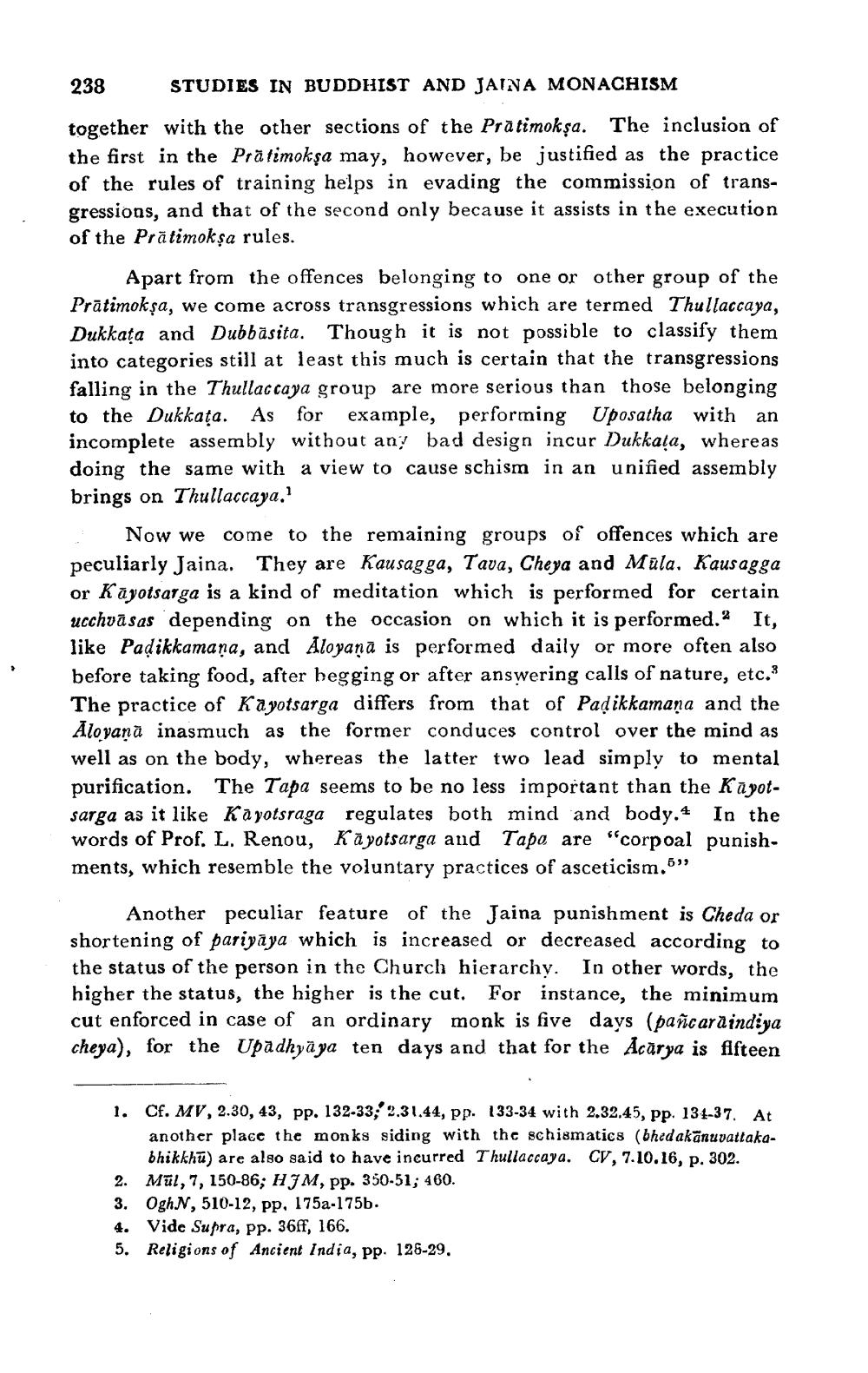________________
STUDIES IN BUDDHIST AND JAINA MONACHISM
together with the other sections of the Pratimokşa. The inclusion of the first in the Pratimokşa may, however, be justified as the practice of the rules of training helps in evading the commission of transgressions, and that of the second only because it assists in the execution of the Pratimokşa rules.
238
Apart from the offences belonging to one or other group of the Prātimokşa, we come across transgressions which are termed Thullaccaya, Dukkata and Dubbasita. Though it is not possible to classify them into categories still at least this much is certain that the transgressions falling in the Thullaccaya group are more serious than those belonging to the Dukkata. As for example, performing Uposatha with an incomplete assembly without any bad design incur Dukkata, whereas doing the same with a view to cause schism in an unified assembly brings on Thullaccaya.'
Now we come to the remaining groups of offences which are peculiarly Jaina. They are Kausagga, Tava, Cheya and Mula. Kausagga or Kayotsarga is a kind of meditation which is performed for certain ucchvāsas depending on the occasion on which it is performed." It, like Padikkamana, and Aloyana is performed daily or more often also before taking food, after begging or after answering calls of nature, etc.3 The practice of Kayotsarga differs from that of Padikkamana and the Aloyana inasmuch as the former conduces control over the mind as well as on the body, whereas the latter two lead simply to mental purification. The Tapa seems to be no less important than the Kāpotsarga as it like Kayotsraga regulates both mind and body. In the words of Prof. L. Renou, Kayotsarga and Tapa are "corpoal punishments, which resemble the voluntary practices of asceticism.5"
Another peculiar feature of the Jaina punishment is Cheda or shortening of pariyaya which is increased or decreased according to the status of the person in the Church hierarchy. In other words, the higher the status, the higher is the cut. For instance, the minimum cut enforced in case of an ordinary monk is five days (pañcara indiya cheya), for the Upadhyaya ten days and that for the Acarya is fifteen
1.
Cf. MV, 2.30, 43, pp. 132-33, 2.31.44, pp. 133-34 with 2.32.45, pp. 134-37. At another place the monks siding with the schismatics (bhedakanuvattakabhikkhu) are also said to have incurred Thullaccaya. CV, 7.10.16, p. 302.
2. Mül, 7, 150-86; HJM, pp. 350-51; 460.
3. OghN, 510-12, pp. 175a-175b.
4. Vide Supra, pp. 36ff, 166.
5. Religions of Ancient India, pp. 128-29.




